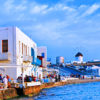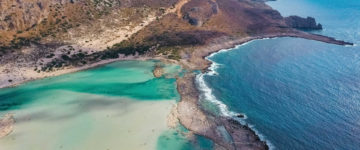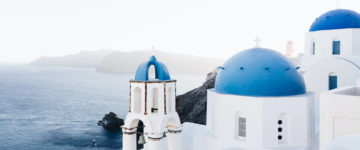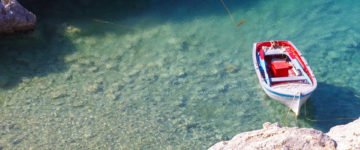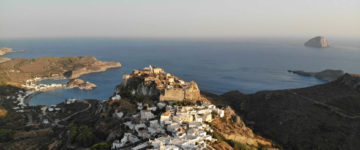
One of the lesser known and most low key of the larger Cyclades, Kythnos is a good antidote to the exploitation that may be encountered elsewhere. Few foreigners visit, and the island – known for much of its history as Thermia, after
its renowned hot springs , is quieter than Kea, particularly to the south where hikes from Dhryopidha, with its colorfully tiled roofs, to coastal coves are the primary diversion. It’s a place where Athenians come to buy land for villas, go spear-fishing and sprawl on sunbed-free beaches without having to jostle for space.
Boats dock on the west coast at Merihas, an attractive ferry and fishing port with many of the island’s facilities. The closest beach of any repute is Episkopí, a 500 meter stretch of averagely clean grey sand with the Pountaki beach, a few minutes walk north of the town, you can shorten this on coast-hugging trails and tracks below the road. Far better are the popular beaches of Apokroussi and Kolona, a very picturesque sand spit joining Kythnos to the island of Saint Loukas. Between Episkopi and Apokroussi lie the ruined temples, towers, walls and reservoirs of the tenth-century BC fortified town of Vryokastro where in 2002 a hoard of some 1500 votive items was discovered here.
With a population of 1300 people Kythnos is a series of folding hills and sere crenellations punctuated by stone huts and ancient walls, vibrant green valleys and unspoilt beaches. An agricultural island mostly, life is still simple. Port life in Merihas and village life in beautiful Hora and Dryopida remain easy-going. Islanders accept friendly visitors who adapt to Kythnos’ gentle rhythms.
Tiny Merihas is inhabited by only 300 people and is home to much of the island’s low-season life.
The distinctively charming capital, Hora also known as Kythnos nestles in the lap of rolling agricultural fields and perserves an inherent Greek character. Small, colorful cafes and shops light up the traditional village lanes, still populated by grannies hanging out the wash. Dryopida, a picturesque town of red-tiled roofs and winding streets clustered steeply on either side of a ravine, is connected to Hora by a footpath. The island’s most famous beach is the double-bay of Kolona, a thin strip of sand, like a peninsula, leading to an offshore islet. Low season it is amazing and a favoured anchorage for yachts. It’s best to reach it by boat since the roads to it are poor.
Kythnos is located between Kea and Serifos island. The specific geographic coordinates of Kythnos are 37°23’00.0″N 24°25’00.0″E in Aegean Sea.


